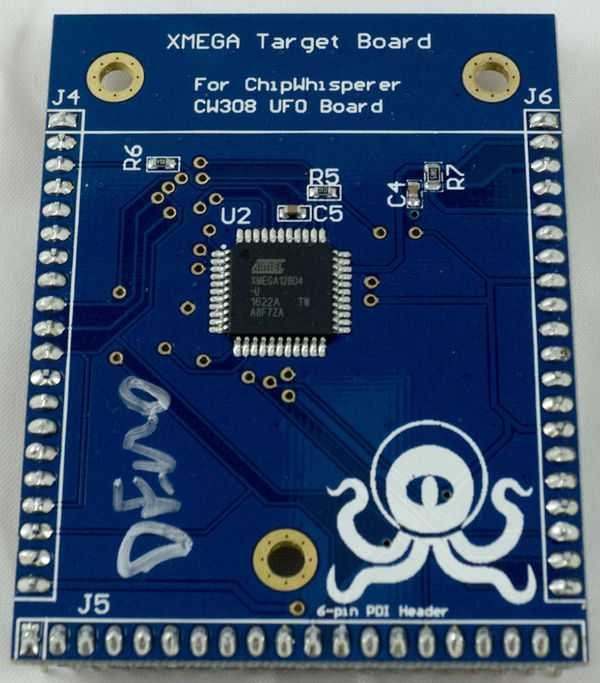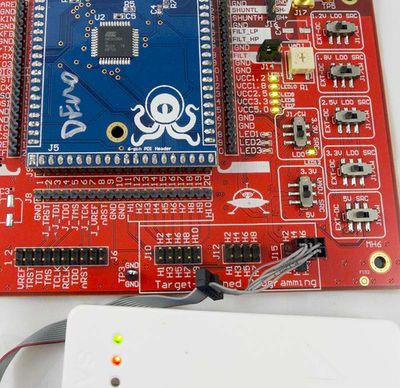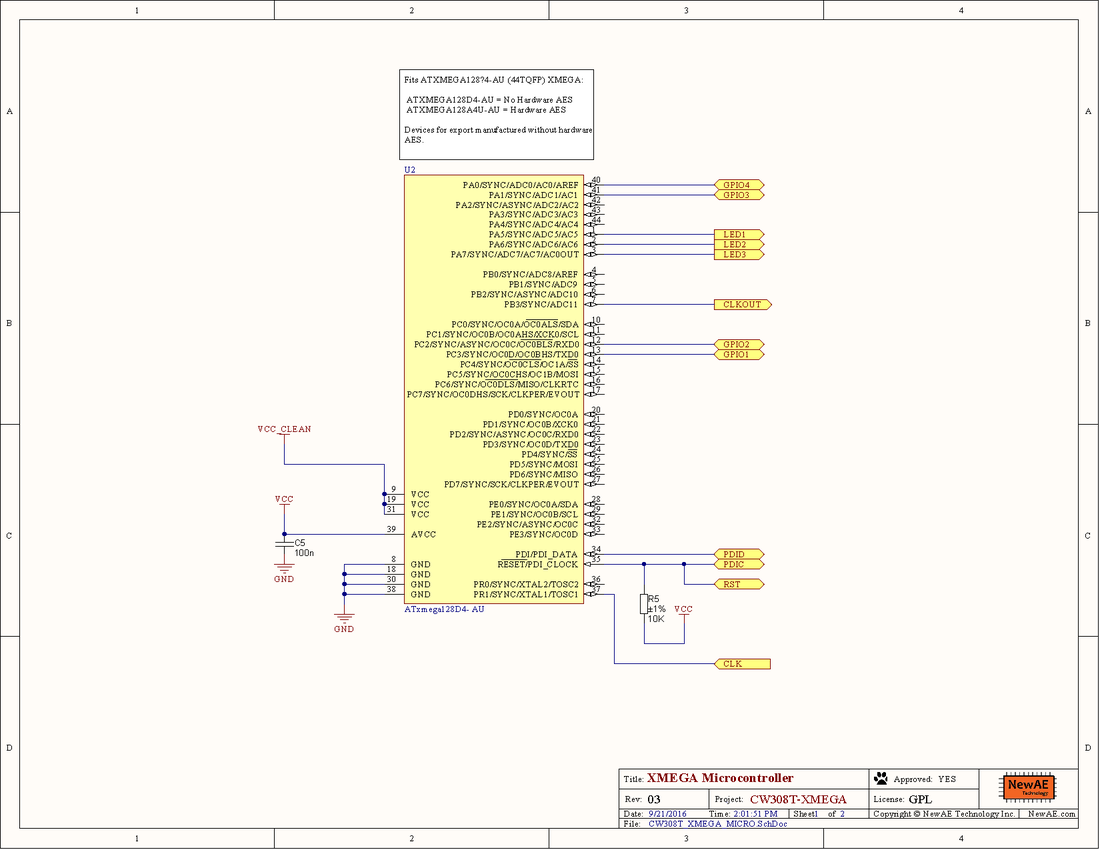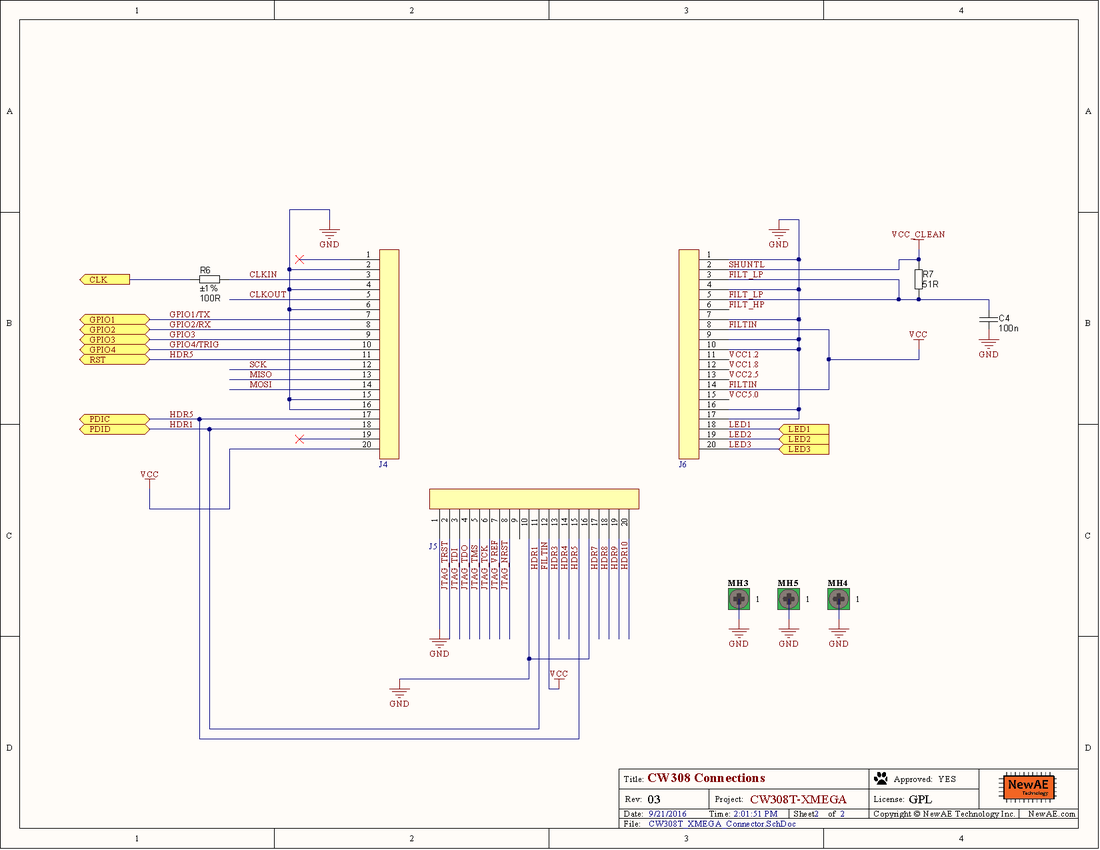| As of August 2020 the site you are on (wiki.newae.com) is deprecated, and content is now at rtfm.newae.com. |
Difference between revisions of "CW308T-XMEGA"
From ChipWhisperer Wiki
| Line 73: | Line 73: | ||
| + | {{Template:Hardware}} | ||
[[Category:Targets]] | [[Category:Targets]] | ||
[[Category:CW308 Targets]] | [[Category:CW308 Targets]] | ||
Revision as of 06:12, 17 January 2017
The CW308T-XMEGA fits an Atmel XMEGA device.
I/O Connections
| CW308 Pin | ATXMega Pin | Notes |
|---|---|---|
| GPIO1 | PC3 (TXD0) | Serial OUTPUT from AVR. |
| GPIO2 | PC2 (RXD0) | Serial INPUT to AVR. |
| GPIO3 | PA1 | Spare pin. |
| GPIO4 | PA0 | Trigger pin. |
| CLKIN | XTAL1 | |
| CLKFB | PB3 | Can output clock on this pin. Useful for synchronizing to internal RC oscillator. |
| LED1 | PA5 | |
| LED2 | PA6 | |
| LED3 | PA7 | |
| PDID | PDID | In-System programming. |
| PDIC/nRST | nRST/PDIC | In-System programming. |
Hardware AES
The XMEGA device that ships with most standard boards is the ATXmega128D4-AU, the same device on the ChipWhisperer-Lite. This board does not contain hardware AES to simplify compliance with export rules.
The pin-compatible ATXmega128A4U-AU contains a hardware AES accelerator. If you wish to attack this device, you can purchase the blank CW308T-XMEGA PCB (or download gerbers from the GIT repository and make them yourselves) and mount the appropriate XMEGA device.
Programming Header
The 6-pin programming heading can be used with the Atmel PDI interface. The pinout of the 6-pin programming header on the main-board allows it to work with standard Atmel ISP tools:



